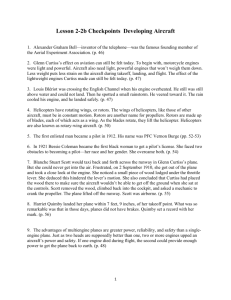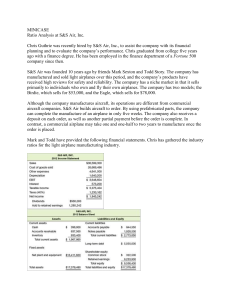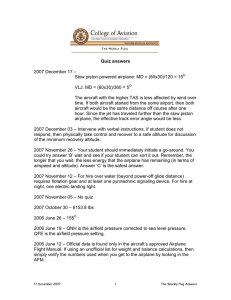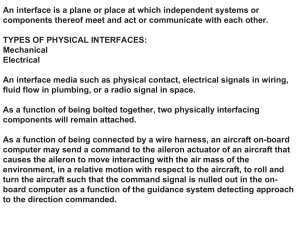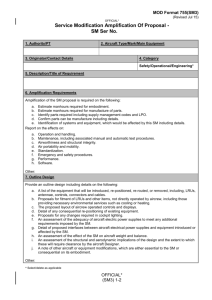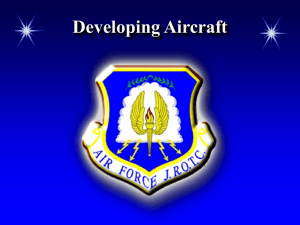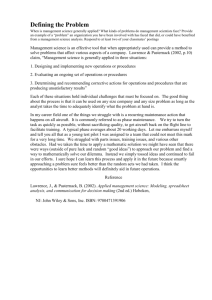Developing Aircraft
advertisement
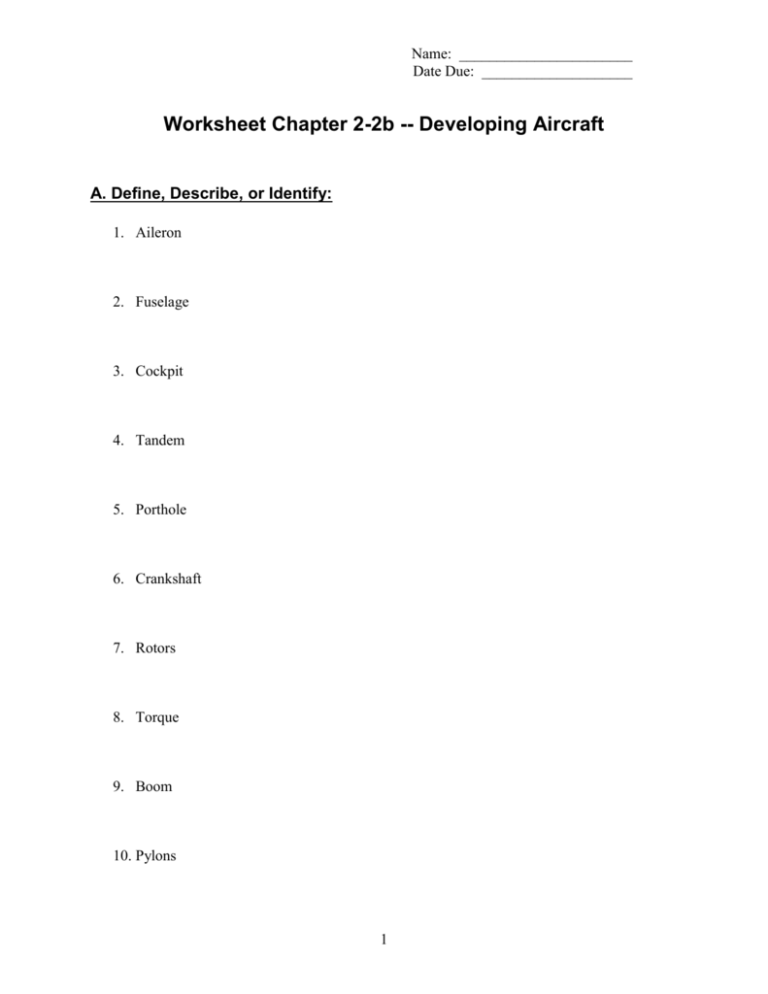
Name: _______________________ Date Due: ____________________ Worksheet Chapter 2-2b -- Developing Aircraft A. Define, Describe, or Identify: 1. Aileron 2. Fuselage 3. Cockpit 4. Tandem 5. Porthole 6. Crankshaft 7. Rotors 8. Torque 9. Boom 10. Pylons 1 Name: _______________________ Date Due: ____________________ B. True/False: Circle the T or F T F Glenn Curtiss started his motorcycle business after retiring from a successful career manufacturing horse-drawn carriages.) T F The Aerial Experiment Association built the first American plane equipped with ailerons but the aileron was patented in Great Britain. T F On his flight across the English Channel, Louis Blériot cooled off his overheating engine by flying his plane into a small rainstorm. T F The Seguin brothers introduced engines cooled with circulating air rather than water. T F After making the first airplane crossing of the United States from coast to coast, Calbraith Perry Rodgers won a $50,000 prize from William Randolph Hearst. T F When Vernon Burge started instruction on 8 April 1912 to become the Army’s first enlisted pilot, he had never even taxied an airplane. T F Blanche Stuart Scott was Glenn Curtiss’s first student, but he tried to keep her on the ground with a block of wood. T F After she got her pilot’s license, Bessica Medlar Raiche formed a company with her husband to make lightweight aircraft. They made their planes even lighter by using silk instead of muslin and piano wires instead of iron wire. T F Harriet Quimby designed a one-piece outfit for female pilots. Her tailor made hers in purple satin. T F At 19, Marjorie Stinson became the first woman authorized to fly the experimental airmail service. 2 Name: _______________________ Date Due: ____________________ C. Fill in the Blanks: 1. Glenn Curtiss’s passion for speed began with bicycles. As a teenager, he raced at county fairs and often won. This experience led to his love of fast ___________________. 2. By the early 1900s aviators in France and Germany were using engines to maneuver lighterthan-air aircraft known as ________________________ in the sky. 3. Like motorcycles, aircraft also need light and powerful _______________ that won’t weigh them down and put less strain on the aircraft during takeoff, landing and flight. 4. Passenger-friendly inventions such as portholes and enclosed _______________ contributed greatly to the development of today’s commercial airliners. 5. All designers of early helicopters faced a common problem: helicopters are difficult to ___________________. Their rotating blades create ___________________, which is a twisting force that causes the body of the aircraft to spin in opposite direction of the blades. 6. Calbraith Rodgers asked drink manufacturer, Vin Fiz, if it would provide financial support for his cross-country air trip in exchange for nationwide______________________. 7. Although the Wright brothers invented the airplane in America, Europe had more aircraft and more ___________________ to fly them than the United States did in those early days. 8. Taking her pilot's test for the second time, Harriet Quimby was required to land within 100 feet of her takeoff point, remarkable since planes in those days did not have ___________________. 9. Matilde Moisant was the second woman in America to get a pilot's license. She also got a court to acknowledge that it was legal to fly on _______________________. 10. Emma Stinson moved her family to San Antonio, Texas, so her daughters, Katherine and Marjorie, could open a _______________________ school. 3
